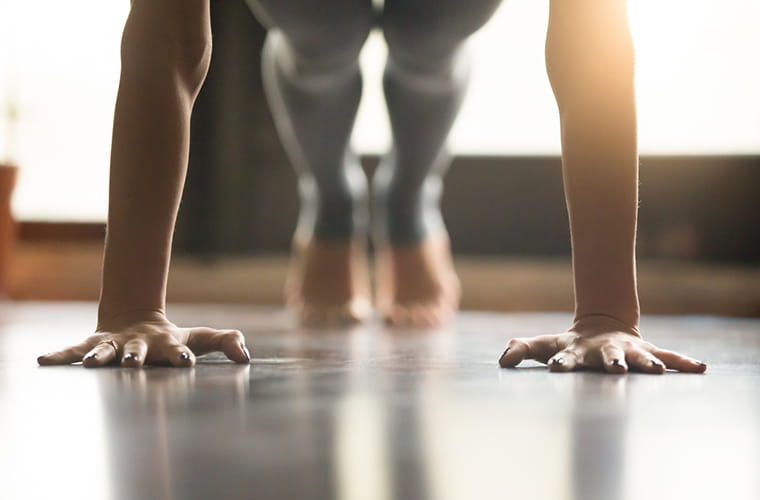Five Workout Tips to do at Home

Being cooped up at home doesn’t mean you have to stop exercising.
“When we’re stuck at home and sitting on a couch in front of a TV, computer or a tech device, we should be getting up and moving at least three to five minutes every hour,” says Jeanmarie Scordino, exercise physiologist at BayCare. “Exercise isn’t just good for your muscles and help maintain a healthy weight. It stimulates blood flow and oxygen to your brain, and it can relieve stress.”
Scordino recommends five exercises that can be done at home.
Lunges
If you’re not sure what a lunge is, start by standing with your feet together. Then take a step and transfer the weight onto your moving foot. “Step forward, backward, to the right or left, in all directions so that your body is rotating and turning,” says Scordino.
Lunges are great, whether you’re a beginner or more advanced. Adjust your step shorter or longer depending on how your body feels. If balance is an issue, she recommends using a chair or a counter for assistance.
Push-ups
Push-ups are done from the prone position – lying with your chest down and your back up and then raising and lowering your body using your arms. “While we often do this exercise on the ground, you can also use a counter with your arms forward and feet back, so that you’re leaning into the counter and then pushing off,” says Scordino. “As you push away from the floor or counter, reach up and around and look behind you to add some dimension to the exercise.”
Planks
A plank is a strength exercise that involves maintaining a position similar to a push-up. But unlike a push up, you hold a prone position with your back up and elbows on the ground. “Once you’re in the plank position, try moving your hands, hips and feet around one at a time. This stimulates your neurological system and engages your core more, plus it’s more fun than just a plain plank,” says Scordino.
Squats
Squats are done by lowering your hips from a standing position and then standing back up. “If you have stretch bands or exercise tubing, try using them to create a pulling or rowing motion as you perform each squat,” says Scordino. “Also, try changing up your starting foot position with feet wider and/or staggered front to back to increase more functional muscle engagement. The idea is to get your body moving in multiple directions so that you’re getting more of a full body workout.”
Wood chop motion
Like the name, this movement is like chopping wood and can assist with balance as well as total body training. Begin by standing tall on one leg, bringing the other leg out to the side with your toes touching the floor. Clasp your hands and bring them overhead on the same side as your standing leg. Then, bring both hands in a chopping motion down toward your opposite side hip as you raise your knee. Return to starting position. For a little strength training, try this exercise holding on to a water bottle or water jug to create your own weights.
Scordino points out that exercising should be three dimensional, so that you’re moving your whole body as much as possible in all directions; using motions that we use in our daily lives.
It’s also important to listen to your body and not overdo a workout. If you have questions about whether a certain exercise is right for you, talk to your doctor.
